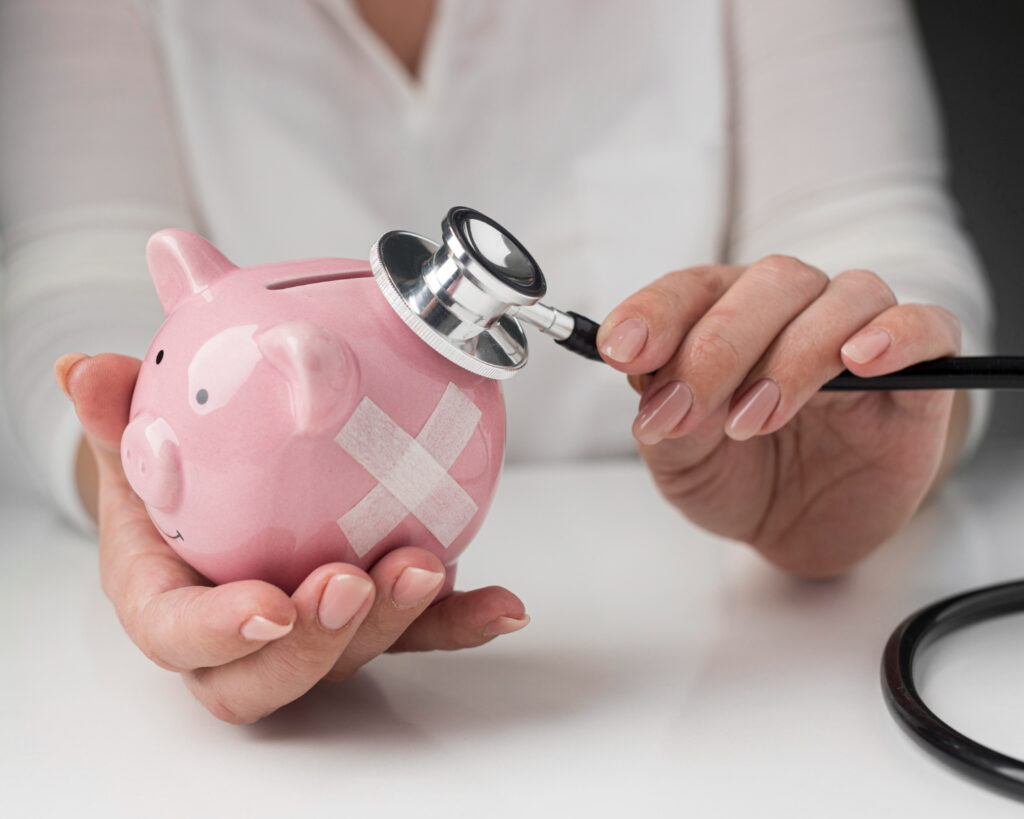That moment in the shower when you notice more hair circling the drain. The subtle change in how your baseball cap fits. The way your hairline seems to be playing a slow game of retreat. For millions of men, these small observations add up to a significant concern.
While genetics play the leading role in the hair loss story for most guys, emerging research suggests your fork might be a more powerful tool than you realize. Not as a magic solution—let’s be clear—but as a supporting actor that could slow the process and improve the quality of the hair you have.
The Hidden Connection Between Your Plate and Your Hairline
James Harrison noticed his hair thinning at 32, much earlier than his father had. “I tried everything marketed to men with thinning hair,” he recalls. “It wasn’t until I cleaned up my diet—for completely unrelated health reasons—that I noticed my hair shedding slowed down.”
Harrison’s experience aligns with what researchers have been uncovering: nutritional status can significantly influence hair health, even when genetic factors are at play.
“Hair follicles are among the most metabolically active structures in your body,” explains nutritional biochemist Dr. Robert Jenkins. “They require a steady supply of nutrients, and when certain ones are missing, your body makes a logical choice—it diverts resources away from hair growth to support more critical functions.”
For men specifically, this nutritional tug-of-war can accelerate or exacerbate hair thinning that might already be programmed by genetics.
Beyond the Bottle: Why Food Trumps Supplements
Walk down any supplement aisle and you’ll find plenty of products promising thicker hair. Most contain the same handful of nutrients. But research consistently shows that nutrients from whole foods are more bioavailable—meaning your body can actually use them more effectively.
“Food provides nutrients in natural ratios and with cofactors that enhance absorption,” notes Jenkins. “Isolated nutrients in supplements simply don’t replicate this complex system.”
So which nutrients should be on your radar? Let’s break them down, focusing specifically on how they affect men’s hair health.
The Big Seven: Nutrients Your Hair Is Silently Begging For
1. Protein: The Foundation of Every Strand
The Science: Hair is approximately 95% keratin—a tough protein that gives your strands their structure. Without adequate dietary protein, your body lacks the building blocks to create new hair.
The Warning Signs: When protein intake falls short, hair becomes brittle and growth slows—often before you notice changes elsewhere in your body. For guys who work out regularly, insufficient protein can mean your body prioritizes muscle repair over hair growth.
Power Sources: Grass-fed beef, wild-caught salmon, free-range eggs, Greek yogurt, lentils, and quinoa.
Real Talk: Most American men actually consume enough total protein, but quality and timing matter. Distributing your protein intake throughout the day (rather than loading up at dinner) provides a steady supply of amino acids for hair growth.
Josh Simmons, a 39-year-old construction manager, found this approach made a difference: “I used to eat mostly carbs during the day and then a big protein-heavy dinner. When I started including protein at breakfast and lunch too, I noticed less hair in my brush after about two months.”
2. Zinc: The DHT Regulator
The Science: This mineral plays a crucial role in hair tissue growth and repair. More importantly for men, zinc helps regulate 5-alpha-reductase, an enzyme involved in converting testosterone to dihydrotestosterone (DHT)—the hormone most associated with male pattern hair loss.
The Warning Signs: Besides hair shedding, zinc deficiency can show up as reduced sense of smell and taste, slower wound healing, and decreased exercise performance.
Power Sources: Oysters (the zinc powerhouse), beef, crab, pumpkin seeds, and hemp seeds.
Real Talk: Heavy sweating depletes zinc levels, so if you’re hitting the gym hard or working in hot conditions, your requirements increase. Physical stress from intense training can also affect zinc utilization.
3. Iron: Oxygen Delivery System for Your Follicles
The Science: Iron helps red blood cells carry oxygen to your tissues—including hair follicles. Without adequate oxygen, follicles essentially suffocate and shrink.
The Warning Signs: Diffuse thinning across your entire scalp (different from the pattern of genetic baldness), unexplained fatigue, feeling cold when others don’t, and decreased workout stamina.
Power Sources: Lean red meat, dark turkey meat, spinach, lentils, and fortified cereals. Pair with vitamin C sources (like citrus fruits or bell peppers) to enhance absorption.
Real Talk: While iron deficiency is more commonly discussed in women, research shows up to 30% of men with hair loss have suboptimal iron levels. Athletes, frequent blood donors, and men with digestive issues are at higher risk.
4. Vitamin D: The Sunshine Vitamin with a Dark Side
The Science: Recent studies have found vitamin D receptors in hair follicles, suggesting it plays a direct role in hair cycling. Vitamin D also influences thousands of genes, including those involved in hair growth.
The Warning Signs: Besides hair thinning, vitamin D deficiency can manifest as fatigue, muscle weakness, bone pain, and seasonal mood changes.
Power Sources: Sun exposure is your primary source (15-20 minutes of midday sun on arms and face several times weekly). Dietary sources include fatty fish (salmon, mackerel), egg yolks, and fortified foods like orange juice.
Real Talk: A staggering 41.6% of Americans are vitamin D deficient, with even higher rates among men who work indoors, live in northern latitudes, or have darker skin tones. A blood test can reveal your status.
Mike Chen, a 36-year-old software developer, shares: “Working 60+ hours a week meant I rarely saw daylight. When blood work showed my vitamin D was tanked, addressing that became a priority. Within months, not only did my energy improve, but my barber commented that my hair seemed thicker.”
5. Omega-3 Fatty Acids: The Inflammation Fighters
The Science: Chronic inflammation can contribute to hair loss by disrupting the normal cycle of hair growth. Omega-3s help reduce systemic inflammation and support scalp health.
The Warning Signs: Dry, flaky scalp, brittle hair, joint stiffness, and longer recovery time after workouts.
Power Sources: Wild-caught fatty fish (salmon, sardines, mackerel), walnuts, flaxseeds, and chia seeds.
Real Talk: The typical American diet has an omega-6 to omega-3 ratio of about 20:1, when ideally it should be closer to 4:1. This imbalance promotes inflammation throughout the body—including your scalp.
6. B Vitamins: The Energy Generators
The Science: B vitamins—particularly biotin, folate, and B12—help create red blood cells that carry nutrients to your scalp. They’re also essential for converting food into energy.
The Warning Signs: Hair loss, fatigue, irritability, memory problems, and mouth sores.
Power Sources: Animal proteins (meat, fish, eggs) for B12; leafy greens and legumes for folate; eggs, almonds, and sweet potatoes for biotin.
Real Talk: Stress, alcohol consumption, and highly processed diets all increase your need for B vitamins. Many men are surprised to learn their “occasional” drinks are actually depleting nutrients essential for hair health.
7. Vitamin E: The Underrated Antioxidant
The Science: As an antioxidant, vitamin E helps protect hair follicles from oxidative stress. One small study found that men who supplemented with vitamin E saw a 34.5% increase in hair growth compared to placebo.
The Warning Signs: Besides hair issues, vitamin E deficiency is rare but may present as muscle weakness and vision changes.
Power Sources: Sunflower seeds, almonds, spinach, avocados, and olive oil.
Real Talk: Vitamin E works synergistically with selenium, another antioxidant found in Brazil nuts, seafood, and mushrooms. Together, they provide more comprehensive protection for your follicles than either nutrient alone.
Beyond Nutrients: Other Factors That Shape Your Hair’s Story
While nutrition lays the groundwork for healthy hair, several other factors influence your mane’s fate:
Stress: The Silent Hair Thief
Chronic stress elevates cortisol levels, which can push hair follicles into a resting phase prematurely. For men, the combination of stress-induced cortisol and genetic predisposition to hair loss can accelerate thinning.
Strategic Move: Incorporate evidence-based stress management techniques like meditation, breathing exercises, or regular physical activity. Even 10 minutes daily can make a difference.
Sleep: Recovery Time for Your Follicles
During deep sleep, your body releases growth hormone and repairs cells—including those in hair follicles. Consistently short or poor-quality sleep undermines this process.
Strategic Move: Aim for 7-9 hours of quality sleep. Create a consistent sleep schedule and limit screen time before bed.
Over-Grooming: Damaging What You’re Trying to Save
Frequent use of high-heat styling tools, aggressive shampooing, and tight hairstyles can damage hair and exacerbate thinning.
Strategic Move: Wash with lukewarm (not hot) water, use gentle pressure when towel-drying, and limit heat styling.
The 4-Week Hair Nutrition Reset
Ready to give your hair a fighting chance? Here’s a simple plan to follow:
Week 1: Audit and Eliminate
- Track your current diet to identify nutritional gaps
- Cut back on the big three hair-harming foods: processed foods, excess alcohol, and added sugars
- Establish baseline photos of your hairline and crown for comparison
Week 2: Foundation Building
- Ensure each meal contains a palm-sized portion of quality protein
- Add a daily handful of zinc-rich seeds (pumpkin, hemp) to your diet
- Incorporate at least one serving of leafy greens daily
Week 3: Advanced Strategies
- Add two servings of fatty fish weekly
- Include vitamin E-rich foods daily (handful of almonds, drizzle of olive oil)
- Plan at least 15 minutes of midday sun exposure several times this week (or discuss vitamin D supplementation with your healthcare provider)
Week 4: System Optimization
- Distribute protein intake evenly throughout the day
- Combine iron sources with vitamin C for maximum absorption
- Evaluate your stress management and sleep habits, making necessary adjustments
Sample Day: Hair-Supporting Nutrition in Real Life
Morning:
- Scrambled eggs with spinach and bell peppers
- Whole grain toast with avocado
- Fresh berries
- Coffee or tea (in moderation)
Mid-Morning:
- Handful of mixed nuts (walnuts, almonds)
- Apple or orange
Lunch:
- Grilled chicken salad with mixed greens, chickpeas, sunflower seeds, and olive oil dressing
- Quinoa or brown rice side
- Water with lemon
Afternoon Snack:
- Greek yogurt with ground flaxseeds and a drizzle of honey
- Green tea
Dinner:
- Wild-caught salmon
- Roasted sweet potato with a touch of grass-fed butter
- Steamed broccoli with olive oil and garlic
- Water or sparkling water
Setting Realistic Expectations
Let’s be straightforward: If you have the genetic coding for male pattern baldness, nutrition alone won’t completely halt it. However, optimizing your diet can:
- Slow the progression significantly
- Improve the quality, thickness, and strength of remaining hair
- Ensure any loss is truly genetic rather than exacerbated by nutritional shortfalls
- Support overall health, which indirectly benefits your hair
“Think of good nutrition as creating the optimal environment for the hair you do have,” suggests Jenkins. “You’re essentially giving your follicles their best fighting chance against genetic factors.”
When to Seek Professional Guidance
While nutrition is powerful, recognize when hair loss might signal something requiring expert attention. Consider consulting a healthcare provider if:
- Your hair loss pattern seems unusual (not following typical male pattern)
- You’re experiencing sudden, rapid shedding
- You notice accompanying symptoms like extreme fatigue or unexpected weight changes
- You’ve optimized nutrition for 3-6 months without any stabilization
Your hair’s story is written daily by the choices you make—including what’s on your fork. While you can’t rewrite your genetic code, you can certainly influence how that code expresses itself through intelligent nutrition.
Remember: Hair grows at about half an inch per month, and each follicle operates on its own growth cycle. This means nutritional changes typically take 3-6 months to show visible results. Patience and consistency are your allies in this journey.
As Harrison reflects on his experience: “My hair isn’t what it was in my twenties, and I never expected it to be. But improving my nutrition definitely slowed things down and made the hair I have look better. That’s victory enough for me.”

Disclaimer: This article is for informational purposes only and is not intended to provide health advice. The nutritional strategies discussed here are general recommendations based on current research, but individual responses may vary based on genetic factors, overall health status, and other variables. If you’re experiencing significant hair loss or other health concerns, please consult with qualified healthcare professionals for personalized guidance.
Sources consulted in the creation of this article include the Journal of Clinical and Dermatological Research, the American Academy of Dermatology’s clinical guidelines on hair loss, the National Institutes of Health’s Office of Dietary Supplements, and peer-reviewed research published in the International Journal of Trichology.



